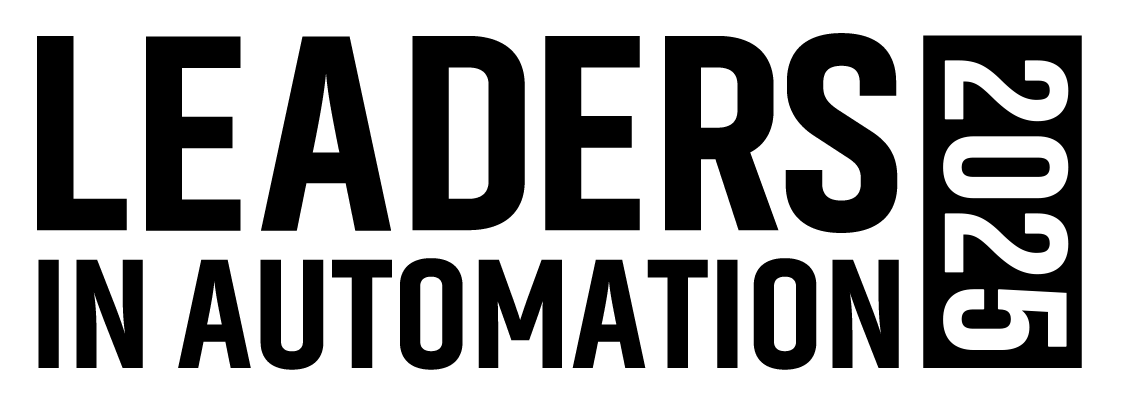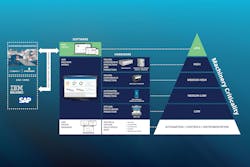Striking the Balance: Tailoring Maintenance Strategies for Optimal Efficiency
Why this article is worth your time ...
- Custom strategies by asset type: Tailor maintenance approaches to asset criticality — reactive for low-cost, simple equipment, preventive for moderately critical assets and predictive for high-value, complex machinery.
- AI’s transformative role: AI enhances predictive maintenance by analyzing data at scale, detecting anomalies earlier and continuously refining predictions for better decision-making.
- Real world application: Learn how a food manufacturer moved from a reactive maintenance approach to condition-based preventative maintenance and into predictive maintenance.
Before predictive maintenance was implemented at Perth County Ingredients, a Canadian producer of dried egg products, maintenance manager Tom Dufton and his team spent their days fighting a constant string of maintenance-related fires. The company’s dried-egg processing facility had long relied on a reactive approach to maintenance that was burning up the maintenance team’s time and resources.
Dufton wanted to get ahead of events so he could plan maintenance and improve the health of the company’s production equipment. To do this, he would need to implement a predictive approach to maintenance.
“Predictive maintenance combines data, sensors and artificial intelligence (AI) to forecast equipment failures before they occur and enable timely interventions,” explained Luda Domakhina, Ph.D. and group product manager of Fiix software from Rockwell Automation. “Unlike reactive maintenance, which waits for failures, or preventive maintenance, which follows fixed schedules, predictive maintenance optimizes efficiency by having maintenance intervene only as needed.”
At Perth County Ingredients, predictive maintenance developed in stages. The first step involved the installation of Fiix, a cloud-based computerized maintenance management system (CMMS). With directives and information delivered via wireless mobile tablets, maintenance technicians can now access standard operating procedures, old work orders and the facility’s building automation system.
System integrator Majik Systems connected the plant’s programmable logic controllers (PLCs) to the Fiix CMMS to access real-time data on vibration, temperature and other equipment parameters.
With this connection “we’re well aware of what’s happening, and our fingers are always on the pulse,” said Dufton.
Ensure that the security complements the required maintenance tasks, instead of creating obstacles. IEC 62443 practices, for example, can be leveraged at every layer from devices and assets on the plant floor, through the control system and into the IT layers.
This enabled Dufton to move to a condition-based approach preventative maintenance approach. With this system in place, when any of the tracked parameters reaches a predefined threshold, a work order is created. By reducing breakdowns and trimming unnecessary jobs from the maintenance schedule, Dufton was able to cut costs by $40,000 in the first nine months, which amounted to a 300% return on investment.
The second stage of Perth County Ingredients’ predictive maintenance implementation involved feeding measurements, such as pump current and torque, into the Fiix Asset Risk Predictor. The software’s ability to predict developing problems enables it to deliver alerts Dufton’s maintenance team. This step helps the company address problems such as premature pump failure and excessive seal wear.
A strategic approach to predictive maintenance
As effective as predictive maintenance can be, this approach to asset management can often be overkill, according to Doug Warren, senior vice president for business realization for HMI/SCADA at Aveva. “Some asset classes just don’t justify anything more than lower-level approaches,” he explained, pointing to the reactive, preventive and condition-based approaches to maintenance.
For this reason, Warren recommends developing a maintenance strategy that assigns the appropriate approach to each asset in the plant. “Find the right balance of optimal cost and minimal unplanned downtime throughout the various classes of assets,” he advised.
For example, reactive maintenance — the break-and-fix approach — may be optimal for a series of simple, small pumps that are inexpensive, easy to fix and widely used. “You probably wouldn’t spend much time putting instrumentation on such pumps,” said Warren. “Instead, you might want to run them until they break and switch to another while you fix whatever is broken.”
The widespread use of such pumps makes getting spare parts easy, and their low cost makes it cost effective to standardize on these pumps and hold some in reserve to replace pumps as they break.
For other equipment, though, more advanced maintenance strategies are preferrable. “Here, maintenance tasks are done based on either a fixed time, such as every three months, or a fixed usage, such as every 100 hours of runtime,” explained Warren.
The next higher approach in the maintenance spectrum is a condition-based approach, which consists of specifying action by applying rules-based logic to data collected from vibration, temperature or other sensors on the asset. This approach often fits equipment like a standard line of cooling fans that are not critical to production but can cause more downtime and expense upon failure than simple, inexpensive pumps. For such fans, a condition-based approach may rely on vibration sensors to monitor the bearings and signal a pending failure.
AI-driven maintenance insights must be easily accessible and actionable. This means that AI must be integrated into a structured workflow where operators and maintenance teams can act on it in real time.
Bigger, more complex and expensive rotating equipment — such as large pumps and compressors, ball-mill crushers used in mining and steam turbines — are among the candidates for predictive maintenance. Their expense and complexity typically prohibit holding a few extra units in reserve, as in the reactive case of swapping simple pumps. Consequently, failure of this equipment will bring a line down.
“On large fleets of such assets, detecting anomalies early, before catastrophic failure, can save millions of dollars,” Warren said.
Where AI fits into predictive maintenance
The “interest in predictive maintenance has increased largely due to advancements in data contextualization and AI capabilities,” noted Fernando Martinez, data driven manufacturing product management solutions and analytics at Siemens Digital Industries Software.
“We’ve seen that more than 75% of manufacturers [we work with] want to implement predictive maintenance,” noted Aaron Merkin, chief technology officer at Fluke Reliability. Most don’t implement it, however, because many don’t have enough technicians on staff with the skills to analyze all the data being collected. But this is where AI can shine, Merkin said. It can analyze reams of test data at high speed to diagnose developing faults, determine their severity and offer recommendations for maintenance crews to follow before failure causes unplanned downtime.
Because AI plays such a large role in helping predictive maintenance become more viable across variety of use cases, some see AI as an essential technology and include it in their definition of the approach. Others argue the opposite.
“Many companies have been running successful predictive maintenance programs for decades without AI,” said Anu Mahesh, product and industry marketing specialist at Yokogawa. “They have gained tremendous value from even the most basic implementations.”
Even so, she acknowledges that AI has improved results from the predictive maintenance programs using more traditional predictive models, which range from simple if-then logic to sophisticated multivariable statistical analyses. “These models are often inflexible and slow to adapt and detect new situations, such as when trying to detect unexpected problems,” said Mahesh. “In some cases, statistical analysis might detect an abnormal situation but not be able to determine the root cause and potential consequences.”
AI, on the other hand, can improve upon these traditional algorithms by providing earlier detection and look for new failure modes.
As effective as predictive maintenance can be, this approach to asset management can often be overkill. Some asset classes just don’t justify anything more than lower-level approaches.
It can also do more than just detect developing problems. “It continuously learns from historical data to refine predictions, helping operations to anticipate maintenance needs more accurately over time,” said Andreas Eschbach, CEO of eschbach.
But using AI alone for this isn’t enough, he added. “AI-driven maintenance insights must be easily accessible and actionable. This means that AI must be integrated into a structured workflow where operators and maintenance teams can act on it in real time.”
This is where software, like eschbach’s Shiftconnector Artificial Manufacturing Intelligence (SAMI), comes in. It detects patterns in historical maintenance and shift records and identifies potential root causes and solutions for recurring problems. Operations teams can then schedule maintenance at optimal times before any failures occur.
SAMI is helping the operations and maintenance teams at Bayer CropScience perform these tasks as well as providing them access to deep process data. Because SAMI does natural language processing and uses generative AI, operators can interact with the software via chat. For example, an operator can ask: Tell me what repairs were made to Line 1 in the past 12 months. With that input, SAMI will pull the relevant data and automatically generate a report within Shiftconnector.
Automating data collection for AI-driven maintenance applications
Advances in equipment data collection have also been key contributors to the wider applicability of predictive maintenance software. “No amount of analytics can overcome inaccurate, incomplete or irrelevant data,” explained Mahesh. “Thankfully, today there are many technologies that help with data collection.”
Smart wireless sensors are reporting vibration, temperature, speed and other data to predictive analytics. “Although the data quality of these sensors may not match that of wired systems, it is sufficient for many applications,” noted Martinez. Plus, the cost of these sensors has dropped over the past few years, helping to extend predictive maintenance across a wider range of industrial machinery.
While adding more intelligence to sensors remains important, Mahesh said it is not as important as it once was. She explained that the trend in industry now is to make sensors faster.
“20 years ago, the trend was to make sensors smarter due to communication limitations,” she said. “Sensors could generate more data than they could communicate. New communication protocols, like ISA100, however, allow sharing larger amounts of data with new AI models.”
This boosts the ability to feed data quickly to the AI in edge devices or in the cloud.
The increase in sensor communication speeds is a direct result of the rise of AI. “AI consumes loads of data, which means data must be coming in continually,” said Drew Mackley, director of sales enablement at Emerson. To deliver on this, Mackley said many implementation teams are exploring ways to streamline the flow of data from the field, through the edge and into the cloud.
“This requires selecting systems that are seamlessly integrated by design to eliminate the data silos that will slow or impede AI analytics,” he said.
Connecting intelligent sensor systems to deliver data across a facility or to the cloud requires devoting careful thought to security.
“Ensure that the security complements the required tasks, instead of creating obstacles,” advised Jason Pennington, director of digital solutions at Endress+Hauser. “IEC 62443 practices, for example, can be leveraged at every layer from devices and assets on the plant floor, through the control system and into the IT layers.”
Integrating disparate data streams from multiple sources into a central platform can be complex, especially when legacy systems are involved. “A centralized, industrial analytics solution that connects directly to disparate data sources — such as historians and enterprise systems — can streamline data integration without requiring major infrastructure changes,” added Tatum O’Kennedy, senior analytics engineer at Seeq.
More industrial maintenance tech coverage from Automation World:
About the Author
James R. Koelsch, contributing writer
Contributing Editor

Leaders relevant to this article:



